Michigan vegetable crop report – July 12, 2023
Rains have brought on important diseases, some mid-season insects are flying, harvests are picking up.
Weather
Watch Jeff Andresen’s weather update.
Despite the rain, we still face a deficit for the season, especially in west central and southwest Michigan.
The forecast calls for:
- Precipitation totals of 0.25-2 inches for the coming week, with totals increasing from north to south.
- Scattered showers and thunderstorms possible to the south Wednesday morning. Variably cloudy and cool to the north. Steady rain with embedded thunderstorms developing west Wednesday afternoon and spreading east by evening. Some heavy rainfall totals possible south.
- Scattered showers and thundershowers possible on a daily basis Thursday through Monday.
- High temperatures from the mid- and upper 70s Wednesday warming to the upper 70s north to mid-80s south Friday into this weekend. Low temperatures generally from the low and mid-50s north to low 60s south through the weekend.
- Medium range outlooks generally call for cooler than normal mean temperatures warming back to normal levels by the third week of the month with near normal to below normal precipitation totals.
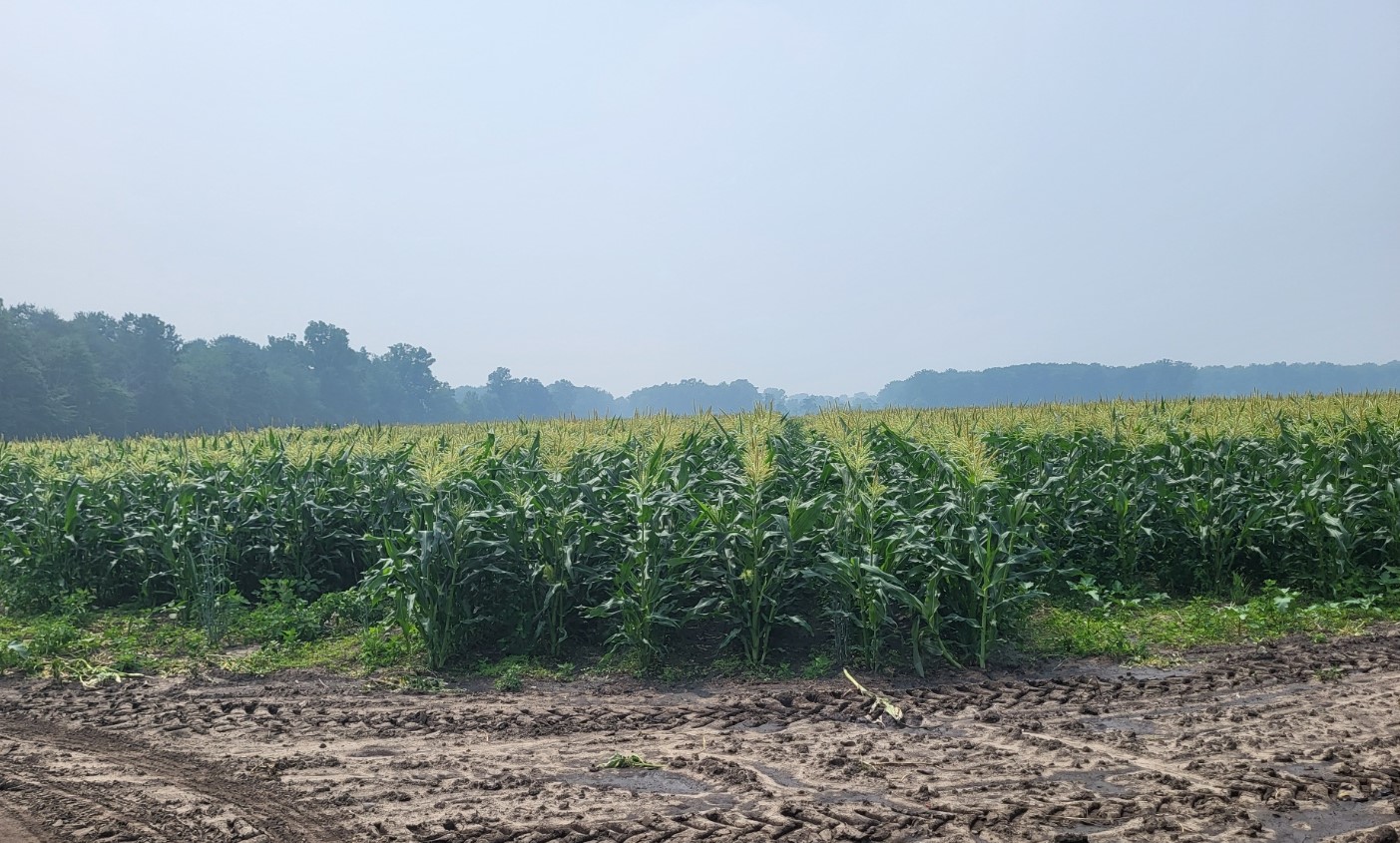
What about this smoke from Canada?
Here are some questions growers asked during the recent smoky period.
Is the smoke and ash depositing free fertilizer?
According to the University of California-Berkeley Botanical Gardens, particulate wood ash can contain potassium, magnesium and calcium at varying levels. However, ash deposition on the tops of leaves can also clog stomata and cause stress. The Washington Post also reports that gaseous nitrous oxide, sulfur dioxide and ozone are produced and can sometimes travel downwind in a way that is detectable to people. Of these, ozone is known to damage plants.
Will the smoke damage my crop?
Ohio State University put together a short article summarizing the potential effects of smoky haze on field crops. Their conclusions are that the diffusion of light may actually improve crop growth for vegetative crops as more usable solar radiation is able to reach lower levels of the crop canopy than would be the case with direct sunlight, similar to hoophouse plastic. But, similar conditions at grain fill might reduce or prevent good drying. They are paying attention to wheat. Interestingly, ScienceNews reported that strong updrafts from the heat can lift and disperse microscopic bacteria and fungi from forest fire areas and deposit them downwind. Most of this reporting is focused on human health, but plant pathogens might mobilize this way as well.
Is it safe to eat exposed crops?
The University of Connecticut assembled a short article partly addressing this topic, citing a study from California that sampled “200 samples of greens (collard greens, lettuces, kale and chard) that were exposed to wildfire smoke and ash. The study found no detectable levels of lead, arsenic, mercury or chromium in any of the samples.”
Will the particulates in the smoke seed rain clouds?
Clouds and precipitation form when water vapor in the atmosphere condenses or sublimates (as ice) on tiny nuclei of particles suspended in the air. Studies have shown that ash can serve in this fashion for high altitude clouds, but that lower altitude clouds may actually produce less precipitation when smoke is involved. Much of the smoke plume transport into Michigan in the recent past took place at lower altitudes.
Did the smoke prevent bees from pollinating?
Beekeepers use smoke as a tool to manage defensive behavior while working honey bee colonies. More research is needed to understand the impact of wildfire smoke on honey bee behavior and their effectiveness as pollinators. Anecdotally, beekeepers report decreased foraging in smoky conditions. According to Oregon State University, smoke can potentially affect foraging bees by augmenting the quality of light and making it difficult for them to navigate while flying and foraging. According to the paper, Effects of pollinators and pollination by Brown et. al., “There is evidence of local-scale fire effects on these interactions, but landscape-scale effects are poorly understood.” Another potential effect of the droughty conditions is that honey bees may be spending proportionally more time foraging for water instead of pollen and nectar.
Weed of the week
Wild carrot (Daucus carota), also known as Queen Anne’s lace, is a biennial weed of the family Apiaceae (carrot/celery family). Wild carrot overwinters as a rosette after its first year and will begin to bolt in early summer of its second year. Its above-ground growth is almost identical to that of domesticated carrot, with both having finely dissected leaves and small white flowers clustered in umbels. One of the easiest ways to differentiate wild carrot is by its taproot, which is woodier and lighter-colored than cultivated carrots. One of the earliest reports of an herbicide resistant weed population was the development of 2,4-D resistance in wild carrot in 1957, just a little over a decade after 2,4-D first began to be sold.
Herbicide options for wild carrot are limited in annual vegetables. No preemergent products are considered to have satisfactory activity. Post-emergent products that work on wild carrot include Banvel (dicamba), Callisto (mesotrione), 2,4-D, Distinct (difluenzopyr) and Stinger (chlopyralid), which are primarily labeled for field crop/perennial systems. Particularly challenging are wild carrot infestations in closely related crops like carrots, celery, parsnips and parsley, as any herbicides with activity on wild carrot will likely also damage these crops. Include crops in your rotation where effective herbicide options can be used to help reduce wild carrot pressure in alternate years where a higher-value vegetable crop is being grown. Tillage can go a long way towards removing this biennial weed. As a result, wild carrot is more commonly a major weed in no-till/perennial cropping systems. For more information on wild carrot management, check out this weed report from University of California Davis.
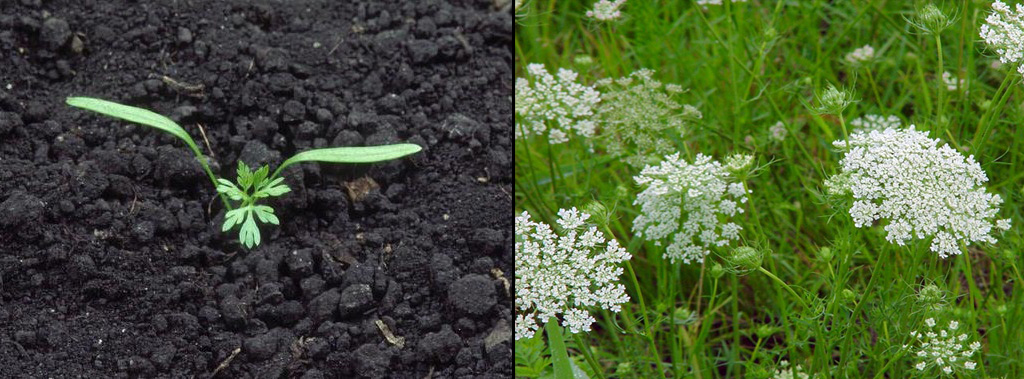
2023 MSU Extension Southeast Michigan Farmer Survey
MSU Extension is pleased to announce our 2023 Southeast Michigan Farmer Needs Assessment Survey. This survey will gather information about your farm and your potential interest in learning more about various farm-related topics. The information gathered will inform future programs and educational opportunities offered by MSU Extension educators for agricultural producers in southeast Michigan. This survey will take approximately 10 minutes to complete and is accessible at the link below:
Take the 2023 MSU Extension Southeast Michigan Farmer Needs Assessment Survey!
Feel free to share the survey link with other growers. We welcome any participation in the survey in order to help Michigan State University Extension better serve its communities.
Rely herbicide label update
Sushila Chaudhari, MSU Extension vegetable weed control specialist, has provided the following update on a label change for the herbicide Rely 280 (glufosinate).
The U.S. Environmental Protection Agency (EPA) has approved a supplemental label for Rely 280 herbicide to help control several annual grasses and broadleaves in cantaloupe, cucumber, summer squash, watermelon, tomato and peppers (bell and non-bell). The Rely 280 label is good through Dec. 1, 2025. In plastic mulch systems, Rely 280 may be applied prior to transplanting, to row middles after planting using a hooded sprayer, or both. In tomato and peppers, Rely 280 may be applied as pre-plant burndown prior to transplanting in a bare soil production system. There is a wait-to-plant interval ranging from two to 21 days (varies with respect to crop, application timing and amount of precipitation after application). Apply up to three times per year but do not exceed a total amount of 87 fluid ounces per acre of Rely 280 per year from sequential applications. Allow a minimum of 14 days between sequential applications. Copies of the Rely 280 supplemental labels will be available from BASF technical service representatives.
Crop updates
Asparagus
Check out the new Asparagus cost of production study! Thanks very much to growers, the Michigan Asparagus Advisory Board, industry members and Chris Bardenhagen of MSU.
Purple spot lesions were visible on asparagus stems last week, and disease severity values have started accumulating. This pathogen overwinters on dead fern as pseudothecia. In spring/early summer, the pseudothecia swell up when it rains, squirting out ascospores onto spears and/or fern. Ascospores germinate and grow to produce lesions. Conidia are produced within these lesions, which infect new tissue when the plant surface is wet and temperatures are warm. There are multiple, repeated cycles of conidia production and infection. This is the stage that leads to early defoliation of fern. It’s what growers model and manage with the TomCast disease forecaster and fungicides. Read all about purple spot’s life cycle and control here. Read more about control in the June 14 report.
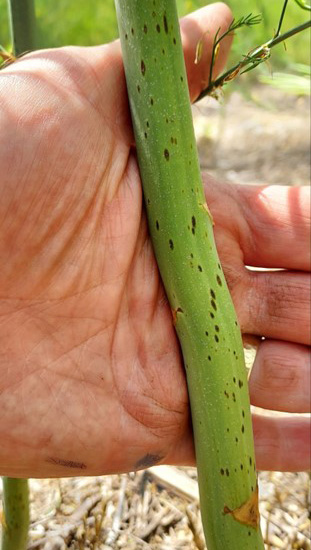
For purple spot, between five and 13 disease severity values (DSV) accumulated between July 1-10 at four sensors MSU Extension is monitoring. Fungicide applications are recommended once 15 DSVs accumulate since the last application.
Japanese beetles had begun to colonize asparagus fields over the past two weeks. This pest is typically most abundant along field edges. Carbaryl, Assail and permethrin are all labeled for control.
Carrots and celery
Celery harvest is underway on some west Michigan farms. Scouts are capturing variegated cutworm moths in pheromone traps, with egg masses detected on plants in a few locations. The first aphid colonies were present in one location, but aphids are not widespread yet. Leafhopper numbers have been low.
For carrots, remember it can be important to use highly effective fungicides, such as Merivon or the Luna materials, early in a foliar disease program.
Escaped pigweed and marestail are challenging in carrots, and herbicides may not work well. Electrical weeding is one way to control these weeds once they are taller than the canopy. For more information on electrical weeding in vegetables, check out this recent MSU Extension article and accompanying fact sheet.
Cole crops and leafy greens
A steady supply of heading and cut-leaf greens are going to market. Overhead irrigation and a cold-chain improve leaf firmness in hot weather. All those wobblers and impact sprinklers make for good bird perches when the water is off, resulting in more bird poop on or near the product, which is commonly eaten raw. See the fruiting vegetables section below for ideas on repelling them.
One sprinkler-specific observation for greens is that the flat-topped sprinkler heads appear to accrue more bird poop than the impact-style sprinklers. The flat tops either make a better perch, attracting more frequent perching, or the aggressive action of the impact sprinkler cleans off the poop, making them look like fewer birds perch there. More observations are needed, and wobblers were not observed at all. The inherent wiggle to the deflector plate of a wobbler may deter perching.
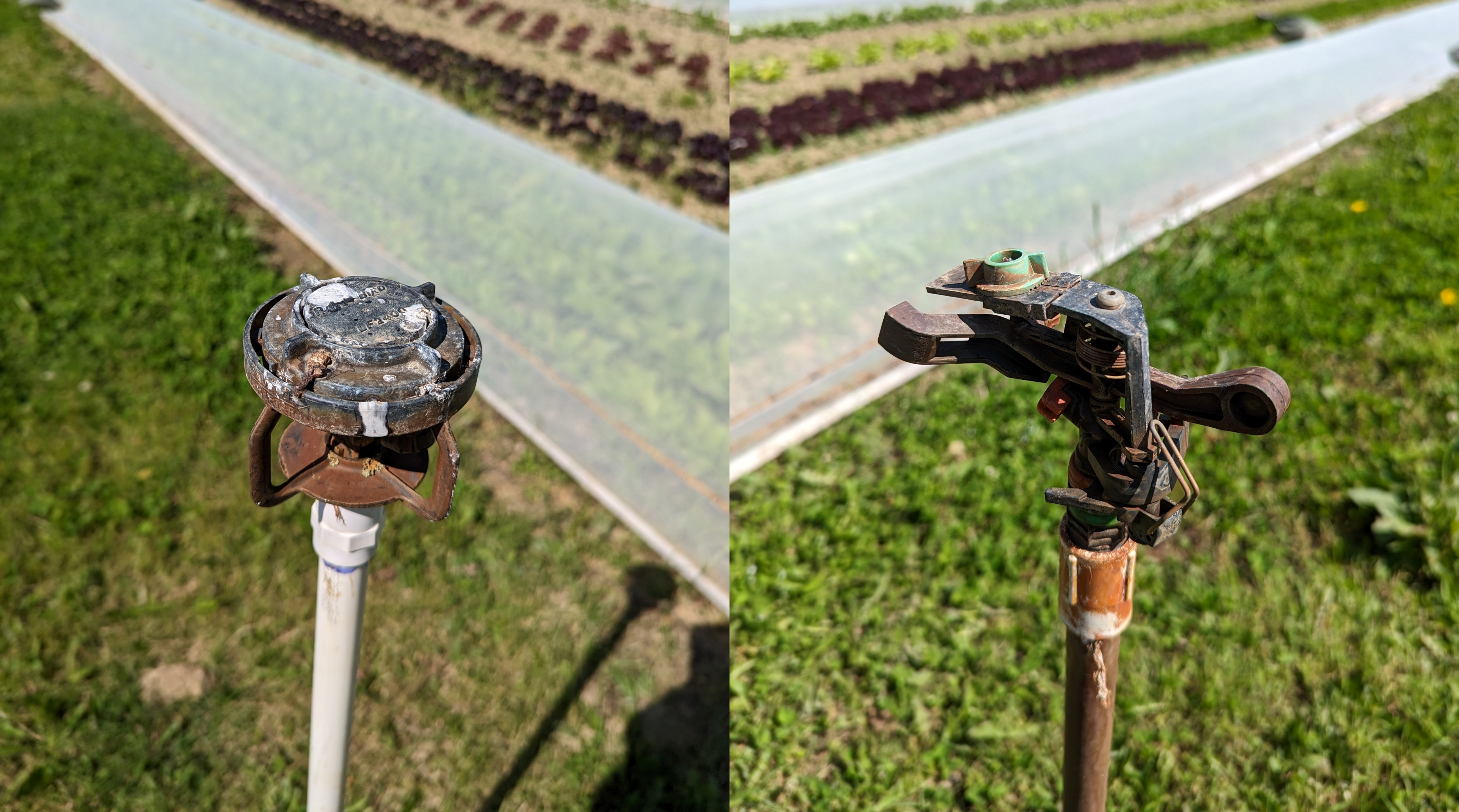
Cucurbits/pickles
Summer squash and cucumbers are being harvested. Some pollination issues were observed in zucchini and summer squash in southwest Michigan last week, but appear to have evened out. The blip in pollination deficiency was likely due to a combination of effects related to the day and night ime temperatures, and the dry weather changing plant and bee behavior. This nice article from Gordon Johnson, University of Delaware, summarizes the conditions causing poor pollination.
Stay on the lookout for cucurbit downy mildew, and consider starting protectant fungicides on cucumbers, pickles and melons.
Spotted cucumber beetles (southern corn rootworm) are being found in squash. Unlike striped cucumber beetle, spotted cucumber beetle does not overwinter in Michigan but migrates up from the southern U.S. While their feeding does not usually cause as much damage as that of striped cucumber beetle, they can also vector diseases like bacterial wilt and squash mosaic virus. Insecticides used for striped cucumber beetle control will generally control spotted cucumber beetle as well.
Squash bug nymphs were present in some winter squash fields this week. Pyrethroids including Baythroid, Brigade, Mustang Maxx and Warrior provide effective control.

Noticing blossom end rot in your squash? This abiotic disorder is caused by a calcium deficiency in developing fruit but is rarely due to a shortage of calcium in the soil. Instead, insufficient/inconsistent watering can prevent movement of the nutrient to the fruit. Low pH can also reduce calcium availability for root uptake and too much nitrogen fertilizer can promote excessive vegetative growth, where water carrying calcium is diverted to leaves rather than the developing fruit. Incomplete pollination can also present as blossom end rot symptoms. Causes of reduced pollinator activity include inclement weather, insecticide exposure or other environmental factors.
MSU is looking for anthracnose leaf and fruit rot and Phytophthora samples for research. Please reach out to us if you’ve got any potential infestations.
Winter squash were setting young fruit on some west central Michigan farms this week; it is critical to protect these young fruit with Phytophthora fungicides if controlling this pathogen is an objective. Some winter squash, including butternut and acorn squash, are most susceptible the first few weeks after pollination, but develop a degree of age-related tolerance later (others are susceptible their whole life). Read more about Phytophthora fungicides in winter squash.
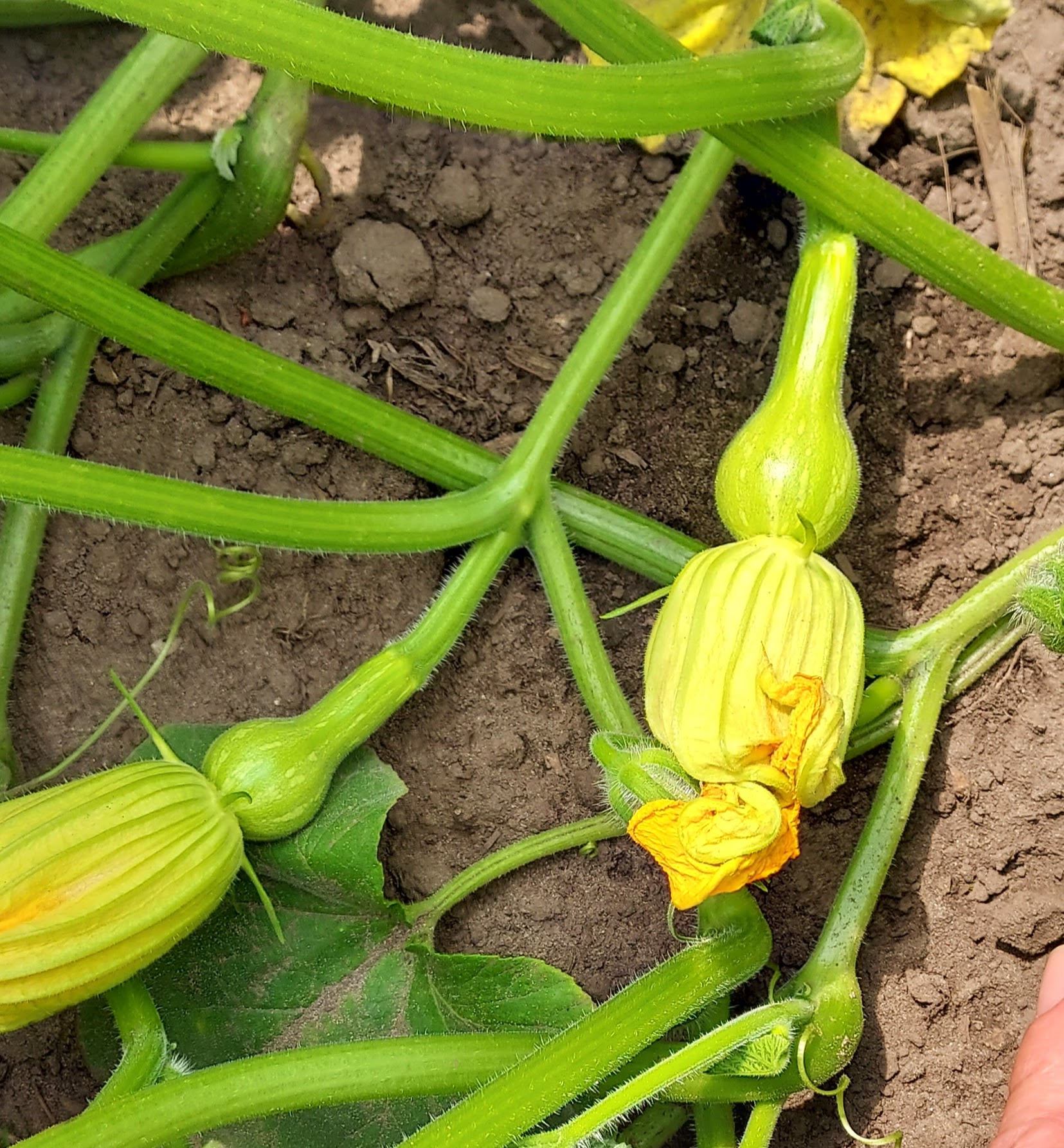
Fruiting vegetables
Spider mites were identified in southwest Michigan last week but their numbers have held steady or decreased with the rain, humidity and high dew points that encourage entomopathogenic fungi. The opposite side of that coin is that the same conditions have been favorable for development of tomato foliar diseases too, and the recent rains have flared up Phytophthora in the rootzone in some fields. Please reach out to us about this so we can do a fungicide resistance analysis.
Blackbirds can be an issue in staked tomato fields. All the posts make for great perches for red winged black birds, who establish mating territories to patrol going from perch to perch. This means lots of bird poop on plants and pecking on red ripe fruit later on. Much like in sweet corn, starlings, grackles and crows sometimes get in on the fruit pecking action. Letting caterpillars build up can increase bird presence.
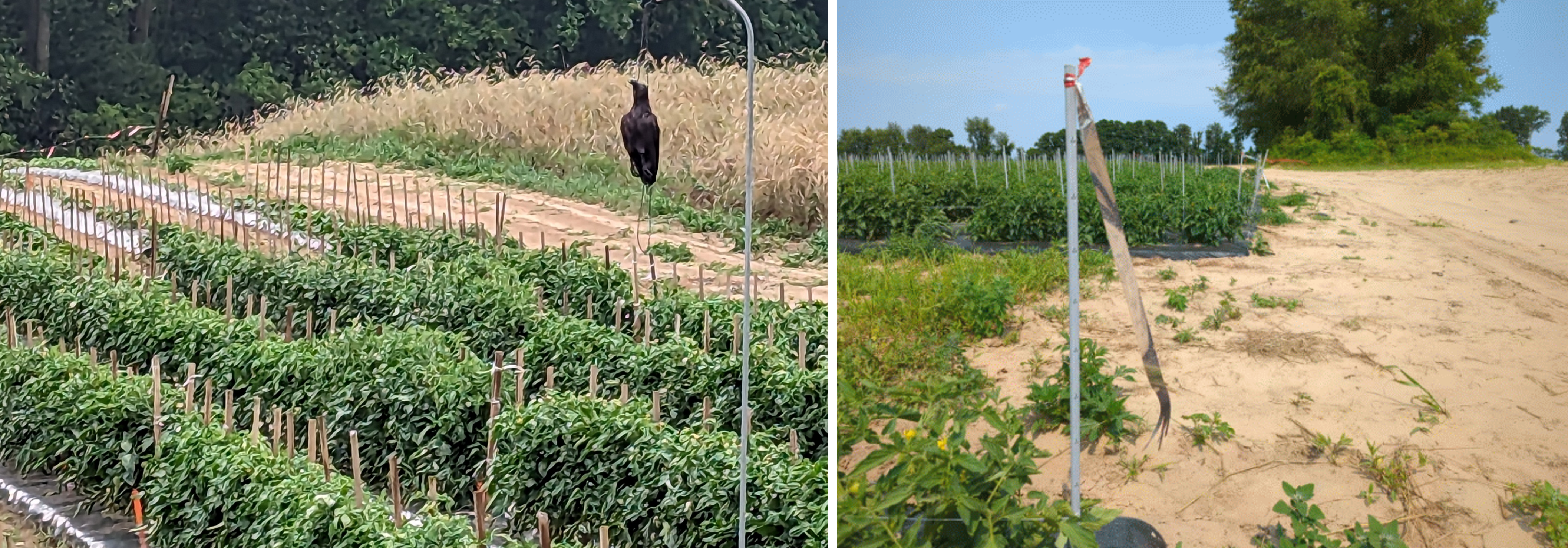
Onions
Stemphylium was detected in a few locations over the past week. Read Mary Hausbeck’s trial-based information on Stemphylium spray programs. Bravo (FRAC M5) plus Tilt (FRAC 3) and Omega/Orvus (FRAC 29) are good options to include in rotation with FRAC 7 fungicides (e.g., MIravis Prime and the Luna products).
Different farms have followed Movento with different things for thrips. So, what to use for sprays five and six? Check out Cornell’s spray program guide, it provides different sequences, based on thrips populations and what has been used earlier in the season. For example, Radiant or Exirel could be used following Agri-Mek. Radiant could be used after Minecto Pro.
Sweet corn
Worried about sweet corn worms? Growers are encouraged to set up traps to monitor for corn earworms. The trap should be set up just before the first crop of sweet corn begins to tassel. Many sweet corn growers are on regular spray schedules as any damage is unacceptable, but traps are still useful, as they can help guide spray intervals (more moths equal tighter intervals). Check out these short video tutorials for corn earworm monitoring. Read more about corn earworm biology and management in this fact sheet.
Corn earworms can be managed with pyrethroid, diamide or spinosyn insecticides. Pyrethroids include Ambush/Pounce, Asana, Baythroid, Capture/Brigade, Mustang Maxx and Warrior. Diamides include chlorantraniliprole, which is in Besiege, Coragen and Vantacor. Spinosyns include spinetoram, or Radiant. In some places, pyrethroids have produced unsatisfactory results because of the development of resistance.
Strawberries
For many growers, it is time to renovate strawberries.
On-Farm Food Safety
MSU and the Conservation Districts offer a program to visit your farm to go over your food safety program to provide critiques and comfort in a confidential fashion. You can then use these notes to make changes ahead of an actual inspection from MDARD. If you are interested in an On-Farm Readiness Review, please fill out this OFRR request survey to start the scheduling process (the sooner the better).
Events
- July 13, 7–8 a.m., Field Crops Virtual Breakfast: Cover Crops After Wheat
- July 14, 12–1 p.m. CT: Farm Bill Friday Focused on Climate & Conservation
- July 17, 8:30 a.m. - 12 p.m., Biochar in Michigan Agriculture
- July 20, 7–8 a.m., Field Crops Virtual Breakfast: Tar Spot
- July 20, 9 a.m. - 1:30 p.m., In-Field and Edge-of-Field Conservation Practice Field Day
- July 27, 7–8 a.m., Field Crops Virtual Breakfast: Bugs And More Bugs!
- August 3, 7–8 a.m., Field Crops Virtual Breakfast: Farm & Truck Vehicle Regulations And Safety
- August 3, 8 a.m. - 4 p.m., 2023 Montcalm County Field Day
- August 8, 1-7 p.m., Specialty crop air and ground drone sprayer demos
- August 10, 7–8 a.m., Field Crops Virtual Breakfast: How To Get The Best Out Of Your Drainage System
- August 17, 7–8 a.m., Field Crops Virtual Breakfast: "Hot Topic" Q & A Session
- August 24, 7–8 a.m., Field Crops Virtual Breakfast: Timing The Last Irrigation Application
- August 31, 7–8 a.m., Field Crops Virtual Breakfast: Setting The Stage For Record Breaking Wheat Yields
- September 7, 7–8 a.m., Field Crops Virtual Breakfast: Marketing Your Grain Crops
- September 14, 7–8 a.m., Field Crops Virtual Breakfast: Monitoring Nematode Resistance In Soybeans
- September 19-21, Farm Science Review
- September 21, 7–8 a.m., Field Crops Virtual Breakfast: Fall Weed Control
- September 27, Wooster, OH, Midwest Mechanical Weed Control Field Day
This work is supported by the Crop Protection and Pest Management Program [grant no 2021-70006-35450] from the USDA National Institute of Food and Agriculture. Any opinions, findings, conclusions, or recommendations expressed in this publication are those of the author(s) and do not necessarily reflect the view of the U.S. Department of Agriculture.



 Print
Print Email
Email




